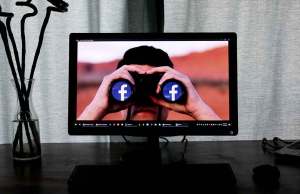The realm of dating as we know it has completely transformed and continues to change with advancing technology. Today, there aren’t as many of us meeting our loved ones in person—striking up conversation with them at the local coffee shop, or beginning our love story with a circumstantial meeting on the street. Instead, people prefer to put their fates into the hands of professional matchmakers and dating websites, such as Match.com and eHarmony. According to research conducted in May of this year:
- Out of the 54,350,000 single people in the U.S., 49,650,000 of them have tried online dating.
- 52.4% of online dating users are male.
- 47.6% of online dating users are female
- 17,500,000 people use eHarmony.
- There are 24,575,000 Match.com members.
- The online dating industry makes $1,935,000,000 a year.
These dating sites often claim that they’re capable of predicting a connection between two individuals based on analysis of traits and preferences. And dating users buy into it (or maybe they’re just too lazy or shy to meet someone in person). However, a new study published in Psychological Science doubts this claim and the ability of these websites. This study found that while a computer may be capable of predicting what the majority of people find desirable and how much a particular individual might desire others, it could not determine who exactly will be attracted to who.
The truth is, a lot more goes into a relationship than one’s predetermined criteria for his or her dream significant other. “There is a shared experience that happens when you meet someone that can’t be predicted beforehand,” said Samantha Joel, lead author of the study and University of Utah psychology professor. So, while a person’s profile may signify everything you’re looking for in a partner, there’s no telling whether you’ll be a good match or not until you meet in person.
The researchers behind this study analyzed two samples of speed daters, both of which first answered a long list of questions about traits and preferences. After Joel and her team analyzed these questionnaires using a machine learning algorithm, the subjects met each other in a series of 4-minute long dates. They then were instructed to rate each other, specifically on the level of interest in and sexual attraction to their different dates. And while Joel expected to predict at least some kind of variance, the team found zero. The results proved the innovative technology’s inability to predict unique romantic desire and attraction.
“Dating can be hard and anxiety provoking and there’s a market there for a short cut. What if you didn’t have to kiss all the frogs? What if you could skip to the part where you click with someone?” she asked. It would be nice to skip the hurt and the heartache and use a computer to flawlessly produce a perfect partner, but as of now, “with the tools we currently have available, there isn’t an easy fix for finding love.”
There’s no telling what the future will bring; there could even be a ground-breaking dating technology developed tomorrow. But until that day comes, it’s safe to say that there is no true predictor of love. You’ve just got to put yourself out there and simply see what becomes of it, whether that means finally going on a date with that guy you met on Tinder or exploring a potential connection with your local barista. Otherwise, you might always be wondering where it could have led you.













